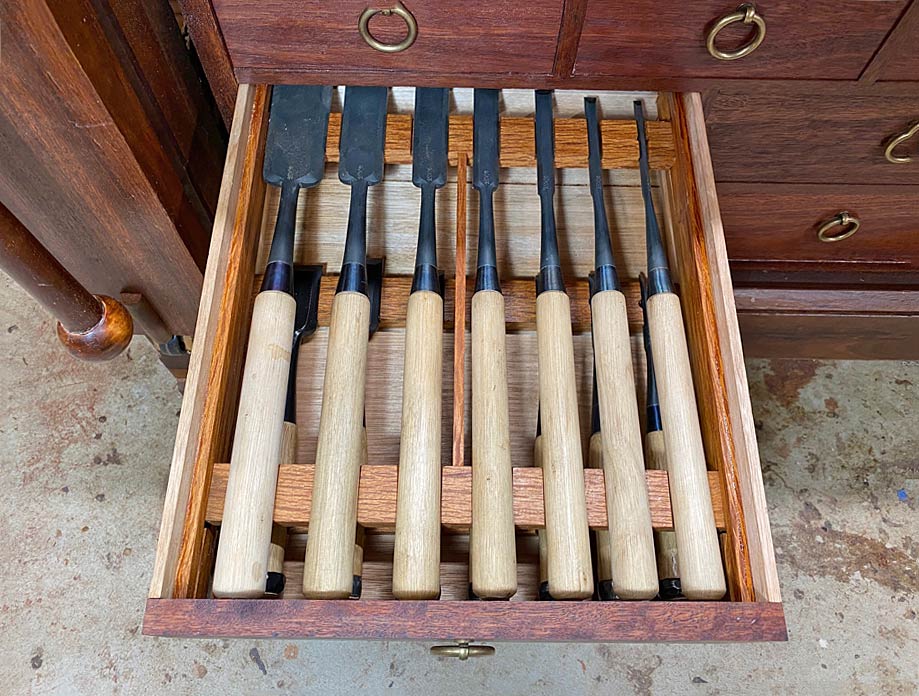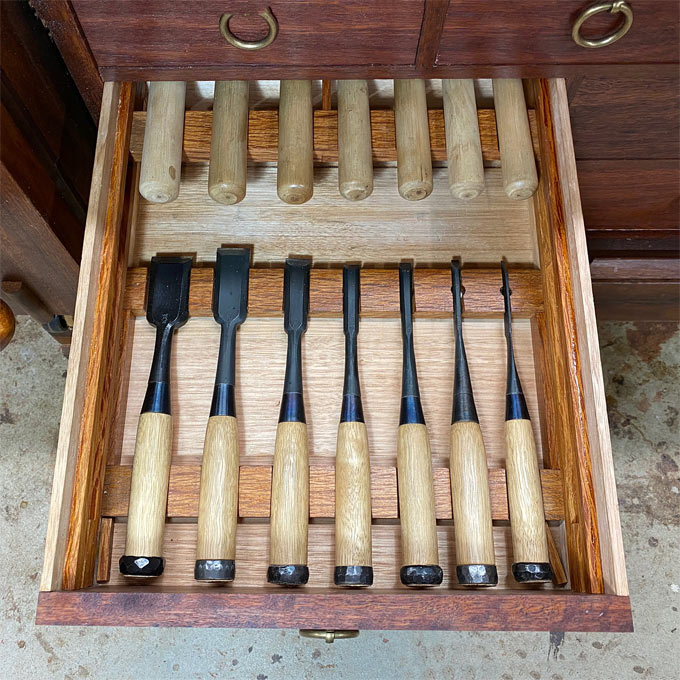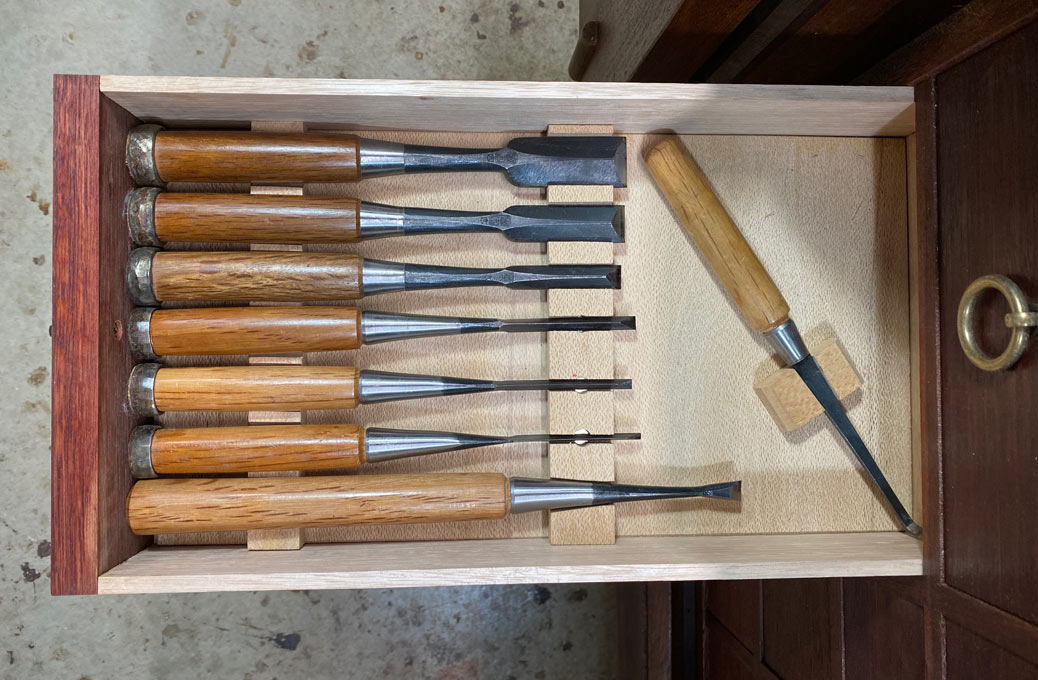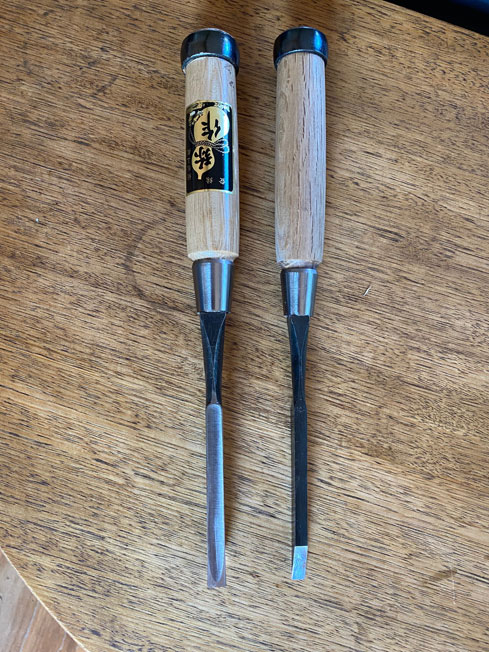I had a few minutes in the shop and decided to put an edge on it. I have no idea where I bought it but either Ebay or Ed's tool store. I just always have wanted one. Anyway the back looks like the chisel on the right here.
As I naturally started by flattening the back I started to wonder what happens when I remove enough material from the bevel side to encroach into the back concave bevel? Are chisels of this style toast when the back bevel is reached?
As I naturally started by flattening the back I started to wonder what happens when I remove enough material from the bevel side to encroach into the back concave bevel? Are chisels of this style toast when the back bevel is reached?














